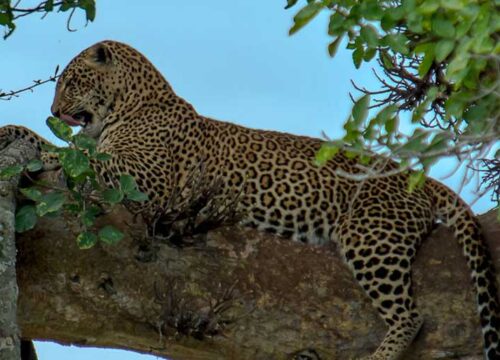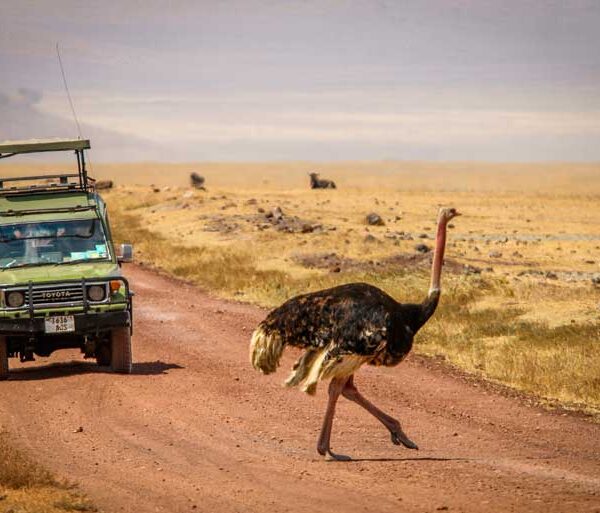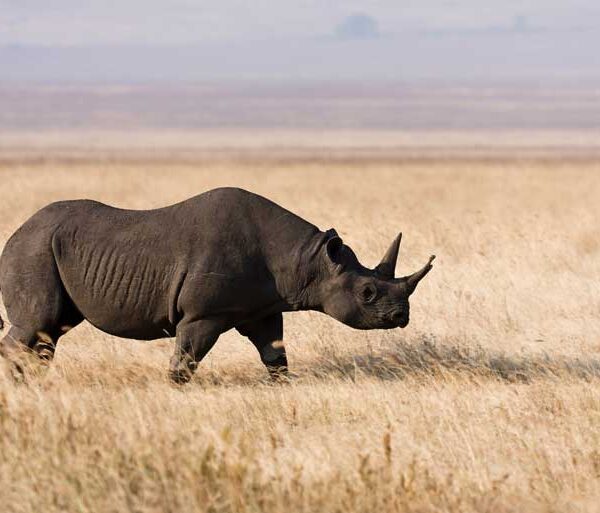The Ngorongoro Conservation Area is a unique and remarkable protected area in Tanzania, located in the northern part of the country. It is named after the Ngorongoro Crater, a massive volcanic caldera that is one of the main attractions within the area. The conservation area covers approximately 8,292 square kilometers (3,202 square miles) and is a UNESCO World Heritage Site.



Ngorongoro Conservation Area
-
Ngorongoro Crater: The main highlight of the conservation area is the Ngorongoro Crater, which is the largest unbroken caldera in the world. The crater’s floor, covering an area of about 260 square kilometers (100 square miles), hosts a remarkable diversity of wildlife, including the “Big Five” (lion, elephant, buffalo, leopard, and rhinoceros). The crater’s enclosed nature makes it a natural sanctuary for numerous animals.
-
Wildlife Viewing: The Ngorongoro Crater is renowned for its incredible concentration of wildlife. It offers some of the best opportunities for game viewing, as animals can be seen up close due to the crater’s compact size and abundant food sources. The conservation area also includes the surrounding highlands, which support additional wildlife species and stunning landscapes.
-
Olduvai Gorge: Located within the Ngorongoro Conservation Area, Olduvai Gorge is an important archaeological site where the remains of early human ancestors and fossils dating back millions of years have been discovered. It is often referred to as the “Cradle of Mankind.”
-
Maasai Culture: The Maasai people inhabit parts of the conservation area and coexist with wildlife. Their traditional way of life, colorful culture, and distinctive clothing make them a fascinating aspect of visiting the area. Some Maasai communities offer cultural tours, providing visitors with an insight into their unique customs and practices.
-
Birdlife: Ngorongoro Conservation Area is also a haven for birdwatchers, with over 500 bird species recorded. Flamingos, eagles, storks, and various waterbirds can be found in and around the crater’s soda lake.
-
Conservation Efforts: The Ngorongoro Conservation Area is dedicated to preserving its unique ecosystems and wildlife while promoting sustainable tourism and community development.
ABOUT THE NGORONGORO CONSERVATION AREA
- Traditional safari adventure
- wildlife-filled volcanic crater
- Garden of Eden of Africa
- Big 5 are present
- incredible scenery
WHY NGORONGORO CONSERVATION AREA WAS SELECTED
Because of its size and good ecology, the Ngorongoro Conservation Area feels like a profoundly thought-out Tanzania safari experience.
WHAT DIFFERSENTIATES THE NGORONGORO CONSERVATION AREA?
There are vast expanses of highland grasslands, savannah, savanna forests, and woods within the Ngorongoro Conservation Area. The area was created in 1959 as a multi-use area, where natural life coexisted with semi-nomadic Maasai pastoralists engaging in traditional cattle grazing. It includes the magnificent Ngorongoro Crater, the largest crater in the entire globe.
ASSURANCE OF ACCESS TO NGORONGORO CONSERVATION AREA
You may reach Ngorongoro Crater via either ground transportation or air travel.
Roads: The distance between Ngorongoro Carter and Arusha is 160 km, while the distance to the Seronera region of the Serengeti National Park is 140 km.
Air: To get to the Ngorongoro air terminal, you can book flights from the Kilimanjaro International Airport or the Julius Nyerere International Airport in Dar es Salaam.
Join the community to insurance for the life and together make the life best. We providing the best insurance policy to customers.
Safety first always
Magna aliqa enim sed ipsum nisi ainy veniam quis.
Trusted travel guide
Magna aliqa enim sed ipsum nisi ainy veniam quis.










